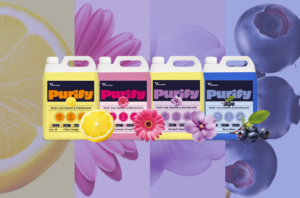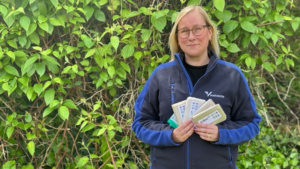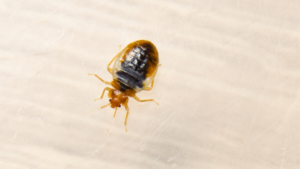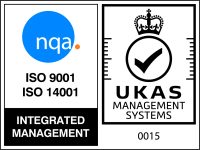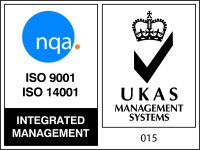The two-stage cleaning process: Immediate prevention, long-term protection
As businesses and organisations across all sectors work to adapt their operations against the backdrop of a global pandemic, the two–stage cleaning process remains as important as ever.
When followed properly, this procedure can mitigate the risks of cross-contamination from a range of harmful microorganisms and viruses, including Covid-19.
What is the two-stage cleaning process?
As the name suggests, the two–stage cleaning process comprises of two distinct phases: cleaning and disinfection.
During the first phase, visible dirt, grime or grease is removed from a surface using either a cleanser or a sanitiser. Once all visible dirt has been removed and the surface wiped clean, a disinfectant or sanitiser is applied to kill pathogens.
From a scientific perspective, the two–stage cleaning process has been recognised as a powerful player in mitigating the spread of harmful pathogens via cross-contamination.
According to a 2016 article published in Antimicrobial Resistance & Infection Control: “Experts agree that careful cleaning and disinfection of environmental surfaces are essential elements of effective infection prevention programs.”
In the UK guidance set out by the Food Standards Agency (FSA), the two-stage process is referred to as an effective way for restaurants, pubs, cafés and vendors, both large and small, to prevent cross-contamination and food-borne illness.
More latterly, both the World Health Organization (WHO) and the European Union (EU), have referred to this cleaning method as a tool for slowing the spread of COVID-19.
Best practice of the two-stage cleaning process
Despite its known role in mitigating harmful microorganisms, the two–stage cleaning process is only effective if properly followed.
Well before any cleaning is undertaken, it is vital for organisations and their cleaning or facilities management teams to have a thorough understanding of the two–stage process in order to achieve the highest standards of cleanliness.
Lack of understanding of certain factors, from which tools and products to use, how to store them and even proper cleaning procedures, can compromise the overall quality of a clean before it has even begun.
Inside the cleaner’s toolkit
In addition to knowledge, a successful two stage clean is also dependent upon having the right tools for the job and, likewise, knowing how to use them.
For example, cleaners should be able to identify the differences between a cleanser or a detergent, a disinfectant and a sanitiser.
Cleansers and detergents cut through dirt while disinfectants kill microorganisms. However, a sanitiser offers both cleansing and disinfecting properties. It is important to know that disinfectants and sanitisers will only work effectively on a surface that has been thoroughly treated with a cleanser.
Speaking broadly of the use of disinfectants, cleaners should be aware of the contact times needed for a product to effectively neutralise microorganisms on a given surface.
For environments where food is served, prepared or stored, the FSA advises that any disinfectants used should adhere to BS EN standards, most specifically BS EN 1276:2009 and BS EN 13697:2015.
In these settings it is also worth knowing which chemicals are safe to use in a food service environment. Regarding the use of disinfectants in general, the manufacturer’s advisory regarding dilution ratios should be heeded.
When it comes to cleaning cloths and mop heads, a study by the American Journal of Infection Control observes that new microfibre is more efficient in absorbing and retaining dirt and harmful organisms than cotton or disposable paper towels.
Finally, at this point in time, it is understood that cleaning staff play a vital role in mitigating and protecting the public from COVID-19 while simultaneously placing themselves at greater risk of contracting the virus.
While disposable gloves are a conventional part of the cleaner’s toolkit in preventing cross-contamination, the Institute of Occupational Safety and Health (IOSH) recommends the use of personal protective equipment (PPE) for those undertaking the two–stage process in an area that is being sanitised for the virus.
Understanding risk factors for cross-contamination
In addition to the proper usage of cleaning materials, those carrying out two–stage cleaning should be educated on the risks of cross-contamination during the process and how they can help to mitigate them.
As Clean Hygiene Today explains, it is important that all tools, cloths, mops and cleaning products are stored safely and properly, and that the area in which they are kept is clean and well-organised.
A colour-coding system may help to prevent cleaning staff from mixing tools, cloths and mops used in one part of a building or premises (i.e., toilets) to clean an entirely separate area (i.e, kitchens), thus potentially preventing the spread of pathogens such as norovirus, salmonella or E. coli.
When actually undertaking the two–stage cleaning process, it is worth paying special attention to high-touch areas (lift buttons, door handles etc) within a building or premises.
Additionally, conventional cleaning practices – that is, working from the cleanest area to the dirtiest and using a clean section of microfibre cloth during the process – should be adhered to.
Finally, a cleaning schedule or rota ensures that cleaning and disinfection takes place on a regular basis. The need for this kind of rota is especially paramount during the autumn and winter months, when stomach bugs such as norovirus thrive.
Onward awareness, onward prevention
Without a doubt, knowledge is the most important factor to a successful two–stage clean.
Ongoing awareness and training, undertaken by both businesses and cleaning staff alike, offers both immediate protection and long-term prevention from the risks of cross-contamination, making the two–stage cleaning process of utmost importance now and for the future.


